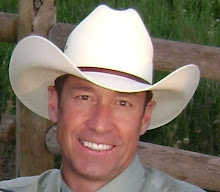We didn't always have a love affair with our lawns. In fact it wasn't until the industrial revolution that lawns became practical for most Americans. Lawns were seen as a luxury expense for only the wealthy who could afford grounds keepers to maintain the fine bladed plants using scythes. Not everyone wanted cattle or sheep grazing in the front yard to keep the green stuff at a manageable height as did Woodrow Wilson while occupying the White House.
Sheep on the White House lawn?
Actually, it was an effort to draw attention to what could be done to free up men to fight and help with shortages of wool during World War I. The wool was auctioned off for $100,000 and given to the Red Cross. Speaking of presidents, early Presidents Washington and Jefferson both used sheep to keep their home lawns at manageable heights.
Green, weed-free lawns so common today didn't exist in America until the late 18th century. Instead, the area just outside the front door of a typical rural home was typically packed dirt or perhaps a cottage garden that contained a mix of flowers, herbs, and vegetables.
In England, however, many of the wealthy had sweeping green lawns across their estates. Americans with enough money to travel overseas returned to the U.S. with images of the English lawn firmly planted in their imaginations. Try as we might, it wasn't as easy to reproduce a beautiful English lawn. After all, they couldn't just run down to their local hardware store and pick up a bag of grass seed. Grasses native to America proved unsuitable for a tidy and well-controlled lawn, and our extreme climate was less than hospitable to the English grass seeds.
By 1915, the U.S. Department of Agriculture was collaborating with the U.S. Golf Association to find the right grass—or combination of grasses—that would create a durable, attractive lawn suitable to the variety of climates found in America. Included in the testing were Bermuda grass from Africa, blue grass from Europe, and a mix of Fescues and bent grass. Fifteen years later, the USDA had discovered several grass combinations that would work in our climate. We were off and running, to find the most suitable pesticides, herbicides, and fertilizers that would protect and serve newly blended mix of grasses. After all, now that we had a good grass blend, we couldn't let it starve or be eaten alive by some hungry pest, or succumb to some nasty disease.
The right grass and the right treatments weren't the only problems facing homeowners wanting the perfect lawn, however. There was also the challenge of providing sufficient water to keep the grass green in summer. It wasn't easy hauling a bucket of water out to the yard during the summer droughts. Cutting the grass was a challenge, as well. English lawns were trimmed with scythes, an expensive process that required a certain amount of finesse, or by grazing livestock on the greens.
Mechanical mowing came about early in the 19th century and there is a general agreement that an Englishman, Edwin Budding, an engineer at a textile mill, developed a cylinder, or reel-type mower. It was a series of blades arranged around a cylinder with a push handle patterned after a machine used in a cloth factory for shearing the nap on velvet. In 1870, Elwood McGuire of Richmond, Indiana designed a machine that basically brought push mowing to the masses. By 1885, America was building 50,000 lawnmowers a year and shipping them to every country on the globe.
For the average American, the invention of the garden hose and the rotary mower made the lawn a more realistic option. Until then, lawns were just too much bother for most families. When most of the necessary tools and types of grass seeds became readily available, the average homeowner was now able to grow a lawn of their own if they wanted. As of yet, there wasn't a real big demand for green lawns in the front yard. It wasn't until The American Garden Club stepped in. Through contests and other forms of publicity, they convinced home owners that it was their civic duty to maintain a beautiful and healthy lawn. So effective was the club's campaign that lawns were soon the accepted form of landscaping. The garden club further stipulated that the appropriate type of lawn was "a plot with a single type of grass with no intruding weeds, kept mown at a height of an inch and a half, uniformly green, and neatly edged." America thus entered the age of lawn care.
Today, U.S. homeowners spend over $17 billion on outdoor home improvements. More than 26 million households hired a green professional, according to a 2000 Gallup survey and this number is expected to grow. Your little patch of green has become a big business and for good reason.
Tuesday, December 7, 2010
Subscribe to:
Post Comments (Atom)





No comments:
Post a Comment